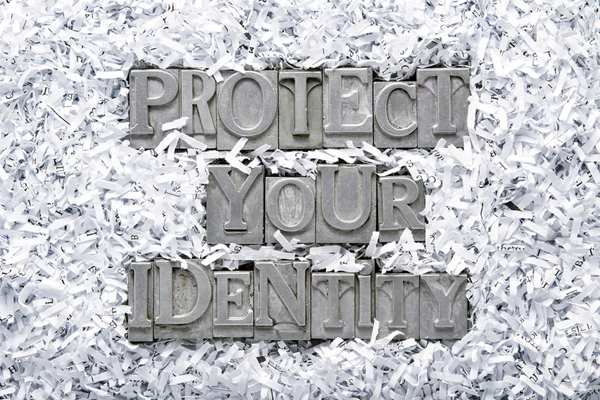How Does Identity Theft Occur
Just how often does identity theft occur and should you be concerned about it? According to the Javelin 2017 Identity Fraud Survey Report, 15.4 million US adults became victims of identity theft in 2016. While this number is scary, the amount lost to fraud has decreased from a record high of 23 billion dollars in 2010.
Part of the decrease is due to stricter privacy laws and tighter security measures by companies that have access to critical data. People are also becoming better informed about how to protect their identity.

The following article outlines some of the more common methods used to steal identifying information and steps you can take to prevent this information from getting in the wrong hands.
Many types of identity theft occur due to easy access of critical personal information. An identity thief can find various and ingenious ways to steal your identity, and every year they get more and more sophisticated. In a majority of cases, though, theft is accomplished by simple, traditional methods - a single careless one-time slip invites an opportunity for a thief.
Here are some of these most common techniques, and how to protect yourself from identity theft. Note that theft through the Internet is actually less common than the more physical, real-world methods listed below:
Dumpster Diving
Most criminals do not mind getting a little dirty, because there is often a big reward. We all have garbage to throw out, but if you toss personal documents or letters into the trash it is easy for someone to drive by and scoop it up. Identity thieves are aware that many individuals do not take care to carefully destroy old credit cards, pre-approved offers and letters with personal data, such as birth dates, names and addresses.
To prevent a thief from finding your personal information and robbing you blind, always shred anything that may have information that could be used against you in the future.
If you have a lot of paper to get rid of, buying a shredder is the perfect option. They are not that expensive, and a shredder will pay for itself by making it difficult for an identity thief to easily gain access to the documents you have thrown away. Make sure to invest in a cross-shredder (one that cuts both ways.) A simple shredder can easily be pieced together by a determined thief.
Mail Fraud
Stealing your mail is another handy trick used by criminals. A lot of homeowners still have mailboxes that can be pulled open by anyone passing by. Some of them even drive in the night to check for outgoing mail. Specifically, they look for letters that may go to banks, utility companies and the government, because these items may yield the most private data.
Protect yourself by getting your newly delivered mail as soon as you can. If you are going away for a while, contact the post office and ask them to hold your mail. Don't leave mail in your mailbox overnight. When you have mail to post with private information, put it in a public and locked mailbox.
Also consider paying your bills online, as this will greatly reduce the amount of mail from utility companies. (Make sure you have an anti-virus and anti-spyware program installed!) If you have private mailbox that can be opened, buy one that can be locked. Your local home improvement store will usually have a few versions for sale.
Family/Friends
We all want to trust the people close to us but that is not always the case. A carelessly placed wallet, loose documents and cash can all go missing very quickly. It's an unfortunate fact that a good percentage of victims know the thief.
Keep all of your sensitive information such as your checkbook, credit card and birth documents locked away in a drawer or safe. When you get home, put your purse and wallets away so that they are not in plain view. A close acquaintance will have a lot of explaining to do if you find them digging through your closet for no apparent reason.
Employee Theft
A fellow employee can steal your money, credit cards or checkbook by rifling through your drawers or pocketbook. While you are out to lunch or simply away from your desk and leave your purse behind, an employee can make a copy of your credit card. They can also write down the information and use it online at a later time.
If you have a work computer and leave it without logging off, a fellow employee with some computer knowledge can check your browsing history and download your personal information and passwords if you logged into your banking account, Paypal or other online institution with your data.
When shopping, retail employees should also be suspect; furthermore, their cash register may have been unknowingly tampered with. When you pay using a credit card or debit, make sure the card is not out of your sight. At the register, take careful note of how your card is used. A thief will swipe your credit card twice, first by sliding it through the register and then through a special copying machine. If something seems fishy, you should immediately ask questions and find out what they were doing with your credit card. You don't want to cause trouble, but you also do not want to have your information stolen.
Telephone Fraud
Telemarketers will call your home at all hours of the day, but so will creditors and companies offering you cheap subscriptions. A criminal can pretend to be an associate at your bank while they try to get you to reveal personal information they will need to empty your accounts.
Unless you called a company or agency yourself, never give out your personal information. Let them know that you will call them back to ensure that you are really talking to someone from your bank, government or ISP. Taking the extra step to protect yourself is the best defense at your disposal.
Online Identity Theft
Shopping online is an everyday event for millions of Internet users, and it can be incredibly safe. However, there are millions of thieves at their computers looking for a way to get your information. Some people have had their computers held hostage by a criminal who has hacked through an unsecure connection. You can easily surf onto a website that looks familiar, but in reality it is a clever clone of the real website. Email scams are also prevalent, and millions of spam emails are sent out to inboxes everyday.
To protect yourself, always type in the link of an email manually. By clicking on a link from an email, you can easily be taken to a cloned website that is set up for the sole purpose of collecting your login, passwords and other private information.
Before you make an Internet purchase, make sure that the website is secure. Most secured sites will have an image of a lock at the bottom of your internet browser. Once the lock is closed, it is an indicator that you are now safe to input your credit card and other information.
It also helps to make sure you use strong password on your online accounts and review your social media profiles to make sure only your true friends and family can view your profile. Even if you limit access to your profile, don't overshare personal information that could be used to answer "challenge" questions for various accounts.
Finally, make sure you have a firewall and antivirus program installed on your computer, and that they are updated. You can also check out this guide to staying safe while shopping online for more tips.
Should identity theft occur despite your best efforts to prevent it, you need to take immediate steps to stop the damage. The following articles will give you information and tips on what to do if you're a victim of identity theft:

